encyclopedia of science fiction
| série: | Science Fiction |
| dessinateur / scénariste: | Collectif |
| éditeur: | Octopus EO 1978 |
| genre: | ScienceFiction |
| classement: | biblio525 |
| date: | 1978 |
| format: | cartonné with jacket |
| état: | TBE |
| valeur: | 10 € |
| critère: | ** |
| remarques: | English book (>> voir aussi dossier 465D Science Fiction) foreword by Isaac Azimov and eleven contributors expressing their own view science fiction = surrealistic fiction = events not existing today, subject to predictory changes whereas fantasy is portraying irreal background that cannot reasonably be supposed to exist the word science fiction started in Great Britain about 1820 1) locations by Robert Holdstock a modern perspective of science fiction, imaginary future based upon a scientific method 2) marriage of science and fiction by Brian Stableford the emergence of a new fiction four important stimuli to generate speculative fictions: a) the revolution in transportation (Jules Verne who invented a host of marvellous vehicles) b) the theory of evolution (Darwin, H.G. Wells) c) the socialist movement or revolution (Jack London) d) anticipation of large-scale war, the threat of global war >> p. 18/19 the war of the worlds by H.G. Wells 3) major themes by Douglas Hill ideas, attitudes and idioms - dystopia (a new world by Aldous Huxley and George Orwell) n.b. dystopia = relating to or denoting an imagined state or society where there is great suffering or injustice - a totalitarian future as described in Dick's high castle and Bradbury's Fahrenheit 451 - mentioning machines and monsters such as aliens - the conquering hero in the earth's future, religion retaining an important role in many dismal futures (god among the stars) - overpopulation is a favourite subject - programming the human mind and human behaviour is a familiar and inexhaustible theme with such authors as: Van Vogt, Brian Aldiss, Arthur Clarke, Heinlein, Wyndham and many others >> p. 40 a space flight 4) pulps and magazines by Michael Ashley the history of the science-fiction comics Hugo Gernsbach founded the first magazine (1926) with "amazing stories" these magazines developed mostly in the U.S. with such titles as >> p. 53 planet stories (1940) Edgar Rice Burroughs contributed a lot for such stories like John Carter, princess of Mars, etc these magazines developed in the form of pulps (cheap but usually low-graded issues) one of the many facets of pulp fiction was the terror story filled with some sex and sadism beneath pure SF stories like "astounding stories, tales of tomorrow, galaxy,analog" appeared also such titles as "weird tales, wonder stories, startling stories, famous fantastic mysteries, unknown, etc" the magazines reached a publishing peak in 1953 with 34 different titles, one of the most unusual of the continental magazine was the French "Métal Hurlant" (heavy metal in the US) 5) screen trips by Alan Frank visual science fiction, espc. the development of special effects, has given rise to fantastic illusions in the cinema most famous moovies: Metropolis, a space odyssey, future world, destination moon, dune, forbidden planet, planet of the apes which were produced in the fifties and sixties introducing comic strip heroes like Flash Gordon and Buck Rogers as well as the production of the notorious series: star wars and star trek, arrival of the sexy space opera with Barbarella 6) machine as hero by Harry Harrison the vital and exotic hardware ingredient, the machine in science fiction has been both hero and symbol and SF's hardware has always been a vital ingredient of the genre's sense of wonder, it also makes apparent man's uneasy relationship with the inanimate flying machines, time machine (time travel which can cause temporal disaster), rockets and starships (exploring the universe), transportation (floating islands), war in the future (starship troops), submarine and underwater cities, spacesuits (different suits for men and women!), robots and androids (the robotic threat), inventions (creatures from outer space), communication (satellites and spaceship stations) most-known stories by Isaac Asimov, L. Sprague, Clifford Simak, Heinlein and many others 7) alien encounter by Chris Morgan alieness is a question of viewpoint, the bizarre creatures and ecologies of another world are alien enough, but man himself can be alien, as can his world in the far future or the far past, even his mind, much modified, can become an alien thing, when examined closely, the alien in science fiction is all of it - any non-human being, espc. intelligent, is an alien - almost human and alien animals (monsters) - not so human and invading aliens (with the classic novels "war of the worlds") and with the scantily clad women menaced by hideous aliens - first contact and its consequences (their exposure to sex and human culture such as religion) >> p. 113 a subsequent painting by Boris Vallejo - alien worlds and the solar system with the planet Mars being the most concerned one, as Mars has always seemed likely to support life but alos Venus and the moons of Neptun (as described in Delany's triton novel) - beyond the solar system (such as dune with the planet Arrakis) - man as alien modifying the human body and creating life such as spiderman, batman, flying men and others as well as of course Frankenstein (cloning the growing of new individuals from a single cell, has become a popular theme and it will be a short step from human clones to androids = artificially produced organic creatures which may be identical with humans) - manipulating evolution and mutations such as humanoid creatures with extraordinary mental powers (extra-sensory perception) - future earths such as Utopia - parallel and alternative worlds with history taking another direction (Uchronia) - the ends of the earth some writers of this type: H.G. Wells, Robert Silverberg, John Wyndham, Fritz Leiber, E.R. Burroughs, Le Guin, Frank Herbert, Frederik Pohl, Mary Shelley, Karl Capek, Poul Anderson and many others 8) art and artists by David Hardy the macabre, ominous, brilliant, futuristic and colourful illustrations of the science-fiction artists have dominated a special area in art from the inception of science fiction the artists have always been a source of immense imagination and creativity, from the gaudy early pulp covers with their impeccable women to the incredible hardware and surrealistic figures - retrospective fiction art in the past: Hieronymus Bosch (garden of delight), Batista Piranese (cellar of invention), and also Leonardo da Vinci, Isidore Grandville, Albert Robida - early magazine art (Jules Verne, H.G. Wells) - magazine artists of the 30's and 40's (astounding stories, fantastic adventures, new worlds) - magazine artists of the 50's and 60's (galaxy, space frontier, analog, children of dune) - professional artists selling original prints >> p. 135 a famous one "revolt in the year 2000" - Boris Vallejo being one of the leading American artists in the fantasy science fiction 9) fiction to fact by Patrick Moore science fiction writers do not consciously function as oracles for science and technology, inevitably, when an important part of their subject matter is speculation on future trends, they will be right sometimes the future may well prove them correct, it will certainly be no surprise to many already prediction from the 40's and 50's have proven true - early science fiction seems very fanciful now, but present fiction will certainly be overstepped in the next years - the anti-gravity material is probably one discovery to be achieved in a near future, satellites and space-stations are already in use - the role of the solar planets in science fiction: Mars, Venus and Mercury, Mars with its Martian creatures having been the favourite world of the story-tellers >> p. 145 example of a planet vehicle: the Mars-rovers - journey through time, with the problem of finding practicable travel sketches within the universe 10) outer limits by Michael Ashley the study, application and ideas of science fiction have crossed every sea, territory and barrier, such is the fascination and following in science fiction that virtually every country has developed its own sub-culture, some writers have become universal prophets, others have been contained within their frontiers first story for reaching the moon written by Cyrano de Bergerac (1619-1655) with his "voyage to the moon" then a succession of authors have been concerned with the moon, especially Jules Verne but of some importance in that connection is writer Stanislav Lem with Solaris and planet of death 11) new wave by Christopher Priest the new wave movement in science fiction was part of the much larger social revolution in the 1960's, it was a rebellion against the accepted idioms of the science fiction category, and can be seen as the single most important development in science fiction in the sixties, science fiction has reached its "Golden Age", no longer science fiction, but real achievement with man travelling in space, computer technology advancing very fast and keeping pace with population and pollution, the new wave was an attempt to find a new approach to the writing of science fiction and SF writers developed new ways such as fantasy science fiction with their own view in expressing a social evolution, concerning human environment and behaviour with a kind of seductive graphic art and novels, producing a kind of symbolic and philosophical theme important contributors to this new kind of science fiction have been: Richard Corben, Ballard, Zelazny, Pohl and others in America the most succesful and imitated figure was Frank Frazetta 12) yesterday today and tomorrow by Malcolm Edwards the horizons of science fiction broadened enormously in the 1970's, at the one extreme star wars, and the continuing and flourishing pulp component of science-fiction, at the other extreme young writers are bringing a heightened literary awareness to the field of imaginative and speculative fiction, commercially and intellectually, science fiction is growing alarmingly fast return to more conventional novels, but also adressing a more selective audience of readers, there was also a publication of dwindling (diminishing) magazines and doomed anthology as well as a production of astronomical theories and possible new worlds such authors were principally: John Brunner and Theodore Sturgeon >> p. 175+177 typical designs of this genre but the three giants of science fiction remained: Isaac Azimov, Arthur Clarke and Robert Heinlein 13) collectors items there is an enormous collector's market for the memorabilia of science fiction: - manuscripts (top copy original, preferably copy-edited) - first edition and old book (rare hardbacks, unusual book by well known writers and some special editions) - magazines (science fiction valuable issues such as astounding stories, amazing stories as well as weird tales including the pulp editions 14) fandom (feeling of empathy and camaraderie with others who share a common interest) expressing the amount of involvement experienced by fans in publishing the so-called "fanzines" some particular themes concerned: - the Cthulhu mythos - UFO enigma (the sighting of flying saucers) - dianetics = modern science of mental health by Ron Hubbard 15) pseudonyms (a name which differs from the real name) many reasons for using a pseudonym: - protection against over-exposure or separating parts of their works for reasons of convenience, the most notorious one being Isaac Asimov (real name = Paul French) 16) awards principally the "Hugos" (science fiction achievement awards) but also prix Jules Verne and the world fantasy awards 17) list of magazines in alphabetical order, more thant 150 titles in the States from 1926 on, the main ones being: amazing stories, astounding stories (notified analog from 1960), fantastic stories + adventures, fantasy and science3, galaxy, weird tales France: fiction, galaxie (but curiously no mention of Métal Hurlant) 18) list of SF films from A, Aelitia (1926) to Zardoz (1973) 19) conventions mostly in the States 19) short biography of some US science fiction authors >>> quite an interesting book giving a summary of science fiction (history, development, genre, writers), already out of date in 2000 and sometimes abit tiresome to the reading, but still of real interest, espc. for the description of science-fiction writers from 1950 to 1970 with their works and of course with beautiful illustrations enclosure - cover of the book - Planet stories (1940) - Marvel science stories (1937) - painting of "revolt in the year 2000" by Tim White - a space vehicle, called rover - painting by Boris Vallejo "princess of Mars" Information science fiction (often shortened to SF, sci-fi or scifi) is a genre of speculative fiction, typically dealing with imaginative concepts such as futuristic science and technology, space travel, time travel, faster than light travel, parallel universes, and extraterrestrial life science fiction often explores the potential consequences of scientific and other innovations and has been called a "literature of ideas" it usually avoids the supernatural, and unlike the related genre of fantasy, historically SF stories were intended to have a grounding in science-based fact or theory at the time the story was created, but this connection is now limited to hard science fiction. hard science fiction, or "hard SF", is characterized by rigorous attention to accurate detail in the natural sciences, especially physics, astrophysics, and chemistry the description "soft" science fiction may describe works based on social sciences such as psychology, economics, political science, sociology, and anthropology space opera is adventure science fiction set mainly or entirely in outer space or on sometimes distant planets, the conflict is heroic, and typically on a large scale it is also used nostalgically, modern space opera may be an attempt to recapture the sense of wonder of the golden age of science fiction the pioneer of this subgenre is generally recognized to be Edward E. Smith with his Skylark and Lensman series, George Lucas's Star Wars series is among the most popular and famous franchises in cinematic space opera, it covers epic battles between good and evil throughout an entire galaxy others: - Alastair Reynolds's Revelation Space series, - Peter F. Hamilton's Void, Night's Dawn, Pandora's Star series, - Stephen Hunt's Sliding Void series, - Vernor Vinge's A Fire Upon the Deep, a Deepness in the Sky are newer examples of this genre Hugo Gernsback, who was one of the first in using the term "science fiction", described his vision of the genre: "by scientifiction, I mean the Jules Verne, H. G. Wells and Edgar Allan Poe type of story—a charming romance intermingled with scientific fact and prophetic vision" Hugo Gernsback (16.8.1884 to 19.8.1957), born Hugo Gernsbacher, was a Luxembourgish-American inventor, writer, editor, and magazine publisher, best known for publications including the first science fiction magazine his contributions to the genre as publisher were so significant that, along with the novelists H. G. Wells and Jules Verne, he is sometimes called "the Father of science fiction" in his honour, annual awards presented at the World Science Fiction Convention are named the "Hugos" |
| couvertures: | 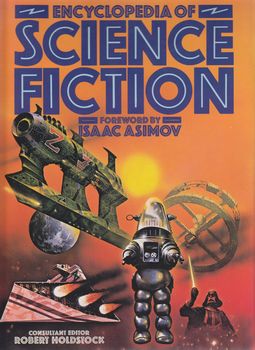 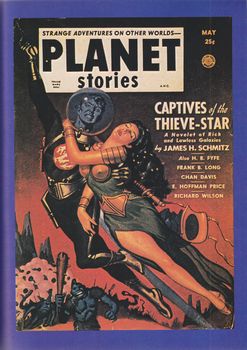 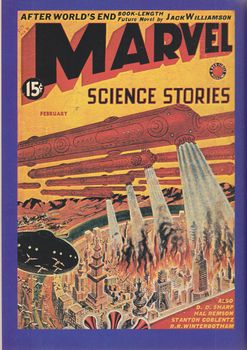 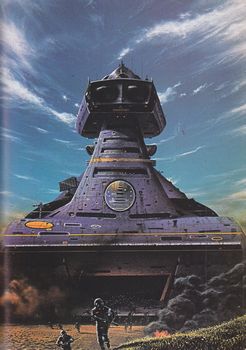 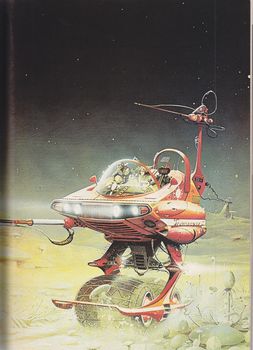 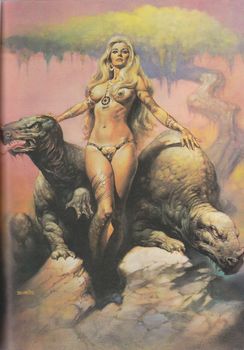 |
Copyright 2008 - 2025 G. Rudolf
